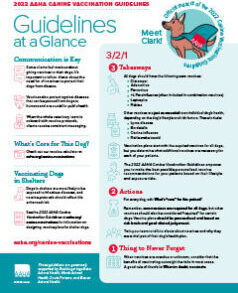Dog owners have been warned that there’s also certain health products they should avoid – as they could do more harm than good
Veterinarians are issuing an urgent warning to owners of certain dog breeds during tick season, with May being especially critical. As tick season is in full swing, pet owners are being advised on what to do, what to avoid, and which breeds are most at risk.
Ticks are small parasitic arachnids that feed on the blood of mammals. They are commonly found outdoors, especially in grassy or wooded areas, and can pose a serious threat to pets like dogs and cats.
If ticks are not found and removed quickly, and pets go untreated, their bites can lead to severe health problems, including Lyme disease. To help prevent this, TrustedHousesitters has partnered with veterinarian Lily Richards to share five tips every pet owner should know.
1. Never buy parasite prevention over the counter
Some products sold online and in stores claim to prevent parasites, but veterinary experts warn that you should only trust products that are available or recommended by your vet, as some unregulated products can be dangerous.
“Pet owners can protect their pets with parasite-prevention products available from their veterinary clinic”, Lily explains. “Over-the-counter products are available but generally are less reliable and, in some cases, not controlled by medical legislation. Therefore, they do not have the backing of extensive research and testing that veterinary products have, making them potentially unsafe for purpose and ineffective.”
2.
All mammals can be affected by tick bites, but some should be especially cautious during tick season. If you frequently walk your dog through grassy or rural areas, you and your pet are at higher risk and should be thoroughly checked afterwards.
Lily says: “Location-wise, ticks are more common in long grass, woodland, or heath/moorland-type environments with lots of wildlife, so avid walkers should be more aware. Also, long-haired breeds where ticks can bury deep into the coat and potentially go unnoticed should take extra care.”
The longer ticks go unnoticed, the more problems they can cause – putting long-haired breeds at greater risk. Owners of the following breeds should be especially cautious:
- Afghan Hounds
- Lhasa Apsos
- Shih Tzu
- Bearded Collies
- Bernese Mountain Dogs
- Irish Wolfhound
- Collies
- Tibetan Terriers
Ensure you check their:
- armpits
- groin
- behind ears
- between toes
3. At-home remedies for removing ticks
According to Lily, if your pet is protected with parasite prevention treatments, manually removing ticks is typically not necessary. However, some pet owners opt to take extra precautions. If you do, be sure to avoid home remedies that could be unsafe.
“A tick comb can be used to remove any ticks sitting in the fur but not yet attached, particularly after a walk in tick areas”, Lily suggests. “Tick-removing tools are also a safe way to ensure all parts of the tick, including mouthparts, are removed safely if one is found attached to your pet.
“Removing the mouthparts in this way prevents reactions, infections, and disease transmission. It is not recommended to use matches or vaseline as ‘at-home’ remedies to remove ticks from pets.”
4.
Every pet owner should use preventive products, as they help lower the risk to pets if they come into contact with ticks. These parasite protection options are available in various forms – such as collars, spot-on treatments, and oral medications – making it easier to choose the option that best suits your pet.
“Tick prevention product choice should be based on your pet’s lifestyle”, says Lily. “If your dog enjoys swimming a lot, perhaps a chewable product will be more reliable for them to ensure they stay safe. If it is difficult to give your pet an oral product, and they do not get bathed or fully submerged in water often, perhaps a topical spot-on product suits them more.”
Most tick prevention products are water-resistant, allowing pets to swim or bathe while using them. However, many topical treatments advise keeping pets dry for at least 48 hours after application. Tick collars can remain on during water activities, but repeated exposure to water may reduce their effectiveness and shorten their lifespan.
5.
While ticks do pose a serious risk, if pets are protected, they shouldn’t contract diseases. Lily reassures owners, concluding: “Common tick-borne diseases such as Lyme disease take 1-2 days of tick attachment to the pet to be transmitted, so all veterinary licensed tick prevention products kill ticks in this time window. Even if you see ticks on your pet, the product will ensure they stay safe.”
This post was originally published on this site be sure to check out more of their content.







































